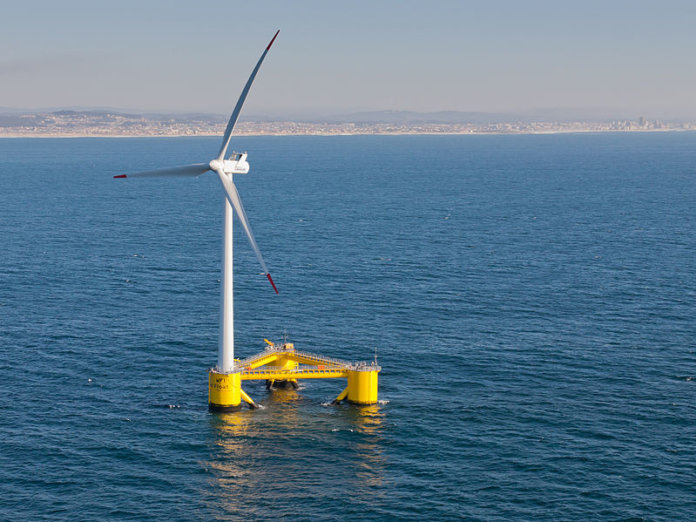The National Offshore Wind Research and Development Consortium has selected the U.S. Department of Energy’s (DOE) National Renewable Energy Laboratory (NREL) for contract negotiation for the consortium’s first offshore wind research and development (R&D) technology award.
The project is designed to improve the economic feasibility of floating wind farm technology. The award represents a step in advancing the consortium’s long-term strategy to further drive down costs of offshore wind development in the U.S.
NREL was awarded $300,000 for its “Shared Mooring Systems for Deep Floating Wind Farms” project. NREL will assess the potential of shared mooring lines to reduce floating wind farm costs by connecting adjacent turbine platforms and distributing load throughout the wind farm so that anchors are required only on the outer turbines, resulting in fewer anchors, fewer mooring lines and lower costs. As part of the project, NREL will design and update its modeling tools to support floating wind farms with shared mooring systems. This feasibility study will help inform future work of consortium partners and developers as they consider best practices for advancing offshore wind energy in an environmentally and economically responsible way.
In June 2018, New York State Energy Research and Development Authority (NYSERDA) was awarded $18.5 million from the DOE to lead the public-private offshore wind consortium. The DOE grant was matched by financial support from NYSERDA for a term of four years.
Under a solicitation announced in March, the consortium seeks proposals that foster significant reductions in the lifetime average cost of offshore wind energy while overcoming domestic market challenges in offshore wind technology. NYSERDA is administering this initial solicitation on behalf of the consortium and will be accepting proposals through Dec. 31.
Photo: Jplourde umaine [CC BY-SA 4.0 (https://creativecommons.org/licenses/by-sa/4.0)]





Offshore Floating Wind farms are the most exciting development yet in the fight against Climate change. It is the only relatively low Tech means of extracting energy directly from the environment, where it is building up as both higher temperatures and higher levels of kinetic energy (seen in increasing wind velocities). There is more available energy build up in the Environment than the entire Global energy demand of the Human race, i.e. extracting as much as possible of this “Environmentally” available energy will directly combat Climate Change while also providing all the electrical power we need or can use. Not… Read more »